
Lapa: The Bohemian Heartbeat of Rio de Janeiro
Discover Lapa in Rio de Janeiro, where historic charm meets vibrant nightlife, offering an unforgettable blend of culture, music, and art.
Lapa, nestled in the vibrant city of Rio de Janeiro, Brazil, is a neighborhood that pulsates with life and culture. Known for its historic arches, the Arcos da Lapa, this area is a melting pot of music, dance, and history. As you wander through its streets, you'll be greeted by the sounds of samba, forró, and other traditional Brazilian rhythms spilling out of lively nightclubs and bars. By day, Lapa offers a glimpse into Rio's past with its colonial architecture and historic sites. The Escadaria Selarón, a stunning stairway decorated with colorful tiles from around the world, is a must-visit landmark. This whimsical mosaic, created by artist Jorge Selarón, is not just a feast for the eyes but also a symbol of the neighborhood's artistic spirit. When the sun sets, Lapa transforms into the epicenter of Rio's nightlife. The streets come alive with street performers, food vendors, and an energetic crowd ready to dance the night away. Whether you're sipping on a caipirinha at a local bar or joining a dance circle on the street, the electric atmosphere of Lapa is sure to leave a lasting impression.
Local tips in Lapa
- Visit the Arcos da Lapa both during the day and night for different perspectives.
- Wear comfortable shoes for walking, as the streets are often cobblestone.
- Keep an eye on your belongings, especially in crowded areas.
- Try a traditional caipirinha at one of the local bars.
- Visit the Escadaria Selarón early in the morning to avoid the crowds.
Lapa: The Bohemian Heartbeat of Rio de Janeiro
Lapa, nestled in the vibrant city of Rio de Janeiro, Brazil, is a neighborhood that pulsates with life and culture. Known for its historic arches, the Arcos da Lapa, this area is a melting pot of music, dance, and history. As you wander through its streets, you'll be greeted by the sounds of samba, forró, and other traditional Brazilian rhythms spilling out of lively nightclubs and bars. By day, Lapa offers a glimpse into Rio's past with its colonial architecture and historic sites. The Escadaria Selarón, a stunning stairway decorated with colorful tiles from around the world, is a must-visit landmark. This whimsical mosaic, created by artist Jorge Selarón, is not just a feast for the eyes but also a symbol of the neighborhood's artistic spirit. When the sun sets, Lapa transforms into the epicenter of Rio's nightlife. The streets come alive with street performers, food vendors, and an energetic crowd ready to dance the night away. Whether you're sipping on a caipirinha at a local bar or joining a dance circle on the street, the electric atmosphere of Lapa is sure to leave a lasting impression.
Iconic landmarks you can’t miss
Escadaria Selarón
Explore the enchanting Escadaria Selarón in Rio de Janeiro, a colorful mosaic staircase that celebrates art, culture, and diversity from around the world.
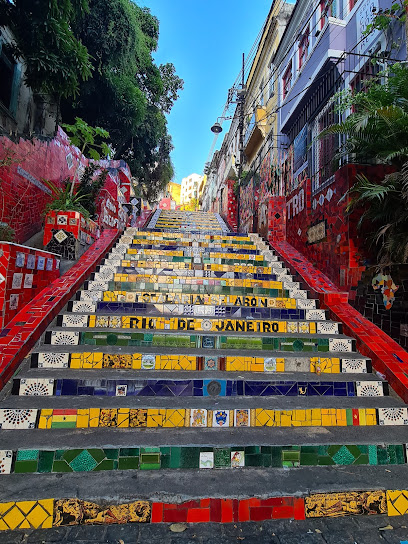
Arcos da Lapa | Aqueduto da Carioca
Experience the historic Arcos da Lapa in Rio de Janeiro, a stunning aqueduct blending rich history with vibrant local culture.
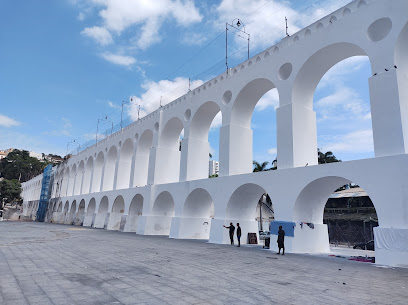
Circo Voador
Discover the heart of Rio de Janeiro's nightlife at Circo Voador, where music, art, and culture collide in an unforgettable experience.
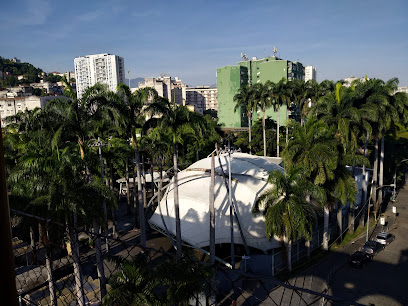
Monumento Nacional aos Mortos da Segunda Guerra Mundial
Explore the Monumento Nacional aos Mortos da Segunda Guerra Mundial in Rio de Janeiro, a moving tribute to the bravery of Brazilian soldiers during WWII.
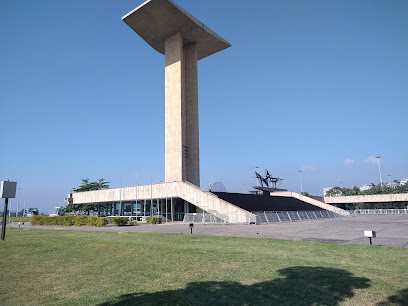
Passeio Público
Explore the lush landscapes and historical charm of Passeio Público, Rio de Janeiro's oldest public park, nestled in the heart of Lapa.
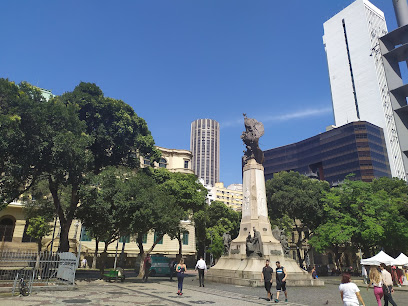
Leviano Bar
Explore the vibrant nightlife of Rio de Janeiro at Leviano Bar, a lively spot in Lapa known for its cocktails, music, and unforgettable atmosphere.

Arco iris da lapa
Discover the lively spirit of Rio de Janeiro at Arco Iris da Lapa, where vibrant nightlife meets delicious buffet dining in the heart of Lapa.
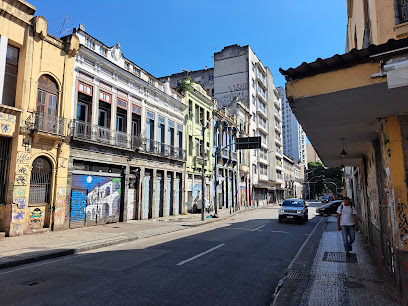
Boate Boas intenções - Lapa
Discover the nightlife of Rio de Janeiro at Boate Boas Intenções in Lapa, where vibrant music meets an electrifying atmosphere for unforgettable nights.
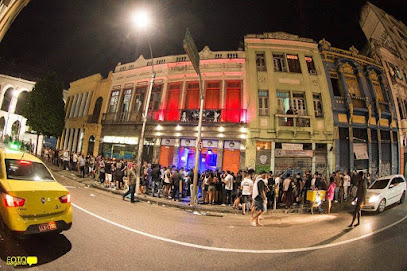
Lapa Irish Pub
Experience the vibrant culture of Lapa at Lapa Irish Pub, where authentic Irish hospitality meets the lively spirit of Rio de Janeiro.

Lampadário da Lapa
Discover the enchanting Lampadário da Lapa, a historical landmark in Rio de Janeiro, where art, culture, and nightlife converge in stunning urban beauty.
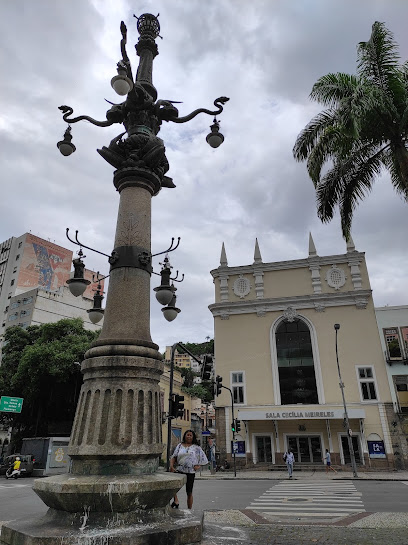
Lapa
Discover the vibrant and eclectic spirit of Lapa, Rio de Janeiro's cultural hub, known for its historic arches, lively nightlife, and rich artistic scene.
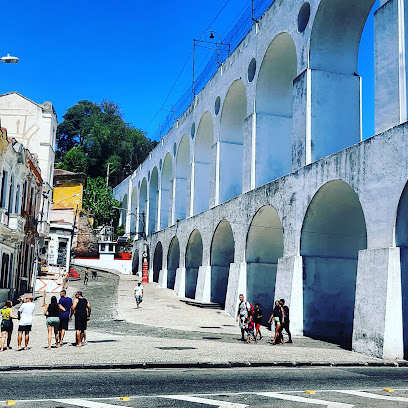
Unmissable attractions to see
Museu do Amanhã
Experience the intersection of art and science at Museu do Amanhã, a futuristic museum in Rio de Janeiro dedicated to the exploration of tomorrow's possibilities.

AquaRio
Explore the largest aquarium in South America at AquaRio, where the wonders of marine life come to life in an unforgettable experience.
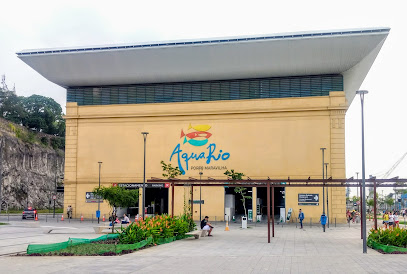
Catedral Metropolitana de São Sebastião do Rio de Janeiro
Explore the stunning architecture and rich history of the Catedral Metropolitana de São Sebastião, a must-visit landmark in Rio de Janeiro.
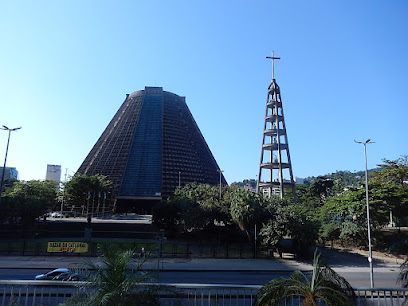
Tijuca National Park
Immerse yourself in the lush landscapes and vibrant wildlife of Tijuca National Park, a breathtaking urban rainforest in Rio de Janeiro.
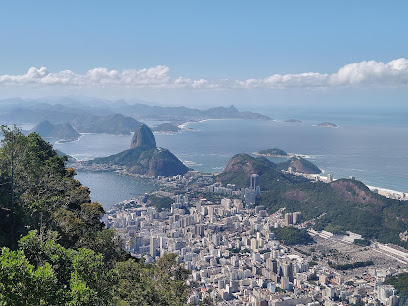
Parque das Ruínas
Explore the enchanting Parque das Ruínas, a cultural oasis in Santa Teresa, Rio de Janeiro, blending art, nature, and breathtaking city views.
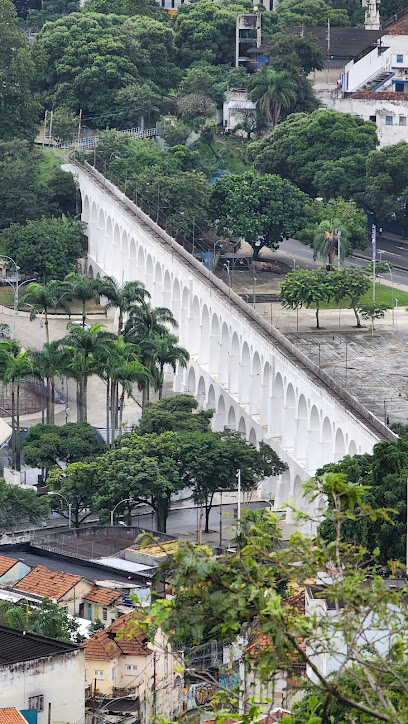
Passeio Público
Experience the tranquility of Passeio Público, a historic park in Lapa that blends art, culture, and nature in the heart of Rio de Janeiro.
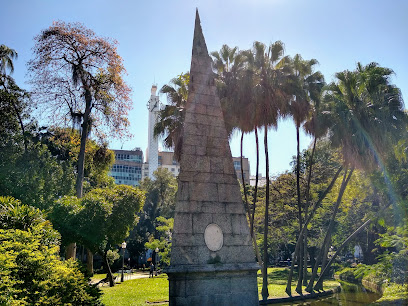
Mirante do Rato Molhado
Experience breathtaking views of Rio de Janeiro at Mirante do Rato Molhado, a hidden gem in the vibrant Santa Teresa neighborhood.

Gruta da Imprensa
Explore Gruta da Imprensa in Vidigal: a scenic spot in Rio de Janeiro offering stunning views and a tranquil escape from city life.

Lapa
Experience the vibrant culture and nightlife of Lapa, Rio de Janeiro, where the rhythm of samba meets stunning architecture.
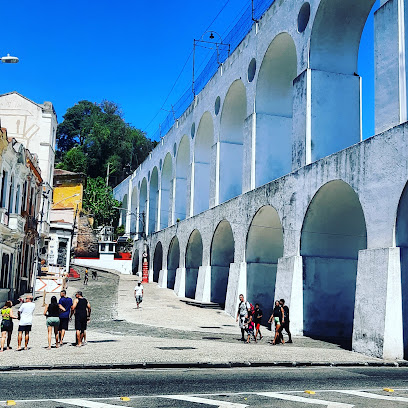
Escada da Bandeira do Brasil
Explore the vibrant Escada da Bandeira do Brasil, a stunning staircase in Rio de Janeiro that showcases artistic beauty and cultural heritage.
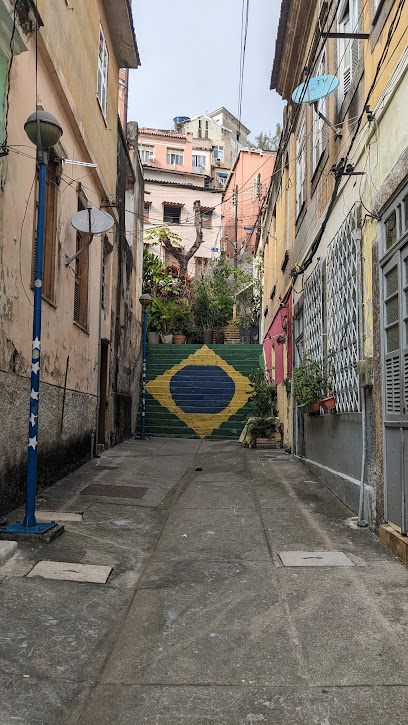
Essential places to dine
Os Ximenes
Experience vibrant Brazilian cuisine and nightlife at Os Ximenes in Lapa, where every meal is a celebration of flavors.

Nova Capela Restaurant & Bar
Experience authentic Brazilian and Portuguese cuisine at Nova Capela Restaurant & Bar in Lapa, Rio de Janeiro - a culinary gem brimming with flavor.

Panka Peruvian Kitchen
Discover authentic Peruvian cuisine at Panka Peruvian Kitchen in Lapa, Rio de Janeiro – where every dish tells a story.
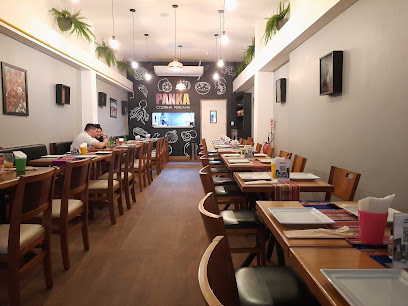
Restaurante Bar Brasil
Discover the taste of Germany in Rio de Janeiro at Restaurante Bar Brasil - where traditional cuisine meets vibrant culture.
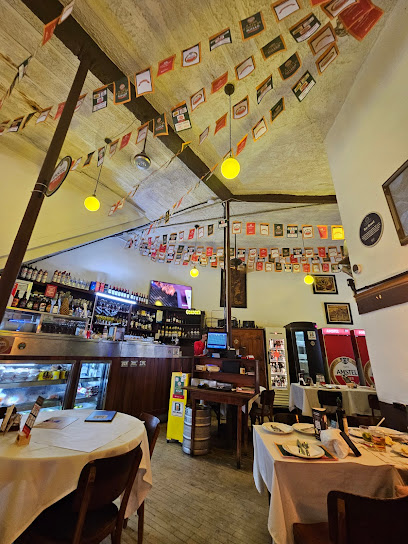
Boteko do Juca
Discover Boteko do Juca in Lapa: where delicious pastéis meet refreshing drinks in Rio de Janeiro's lively atmosphere.
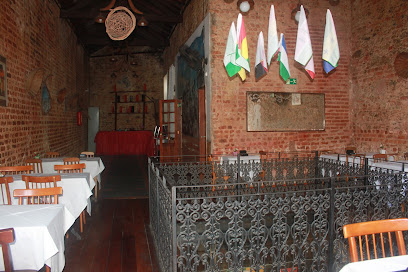
Bar Ernesto
Discover Bar Ernesto: A vibrant German bar in Lapa offering authentic cuisine and local brews amidst Rio de Janeiro's energetic nightlife.
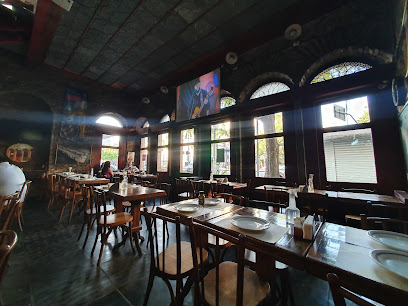
restaurante Cortiço Carioca
Discover authentic Brazilian cuisine in Lapa at Restaurante Cortiço Carioca - where every dish tells a story.
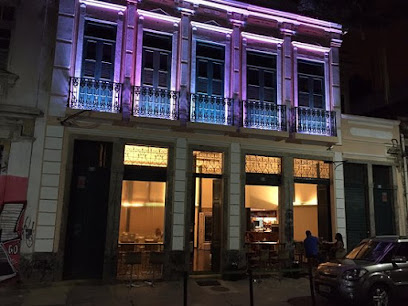
Bar Victor
Discover Bar Victor in Lapa: A culinary haven offering gourmet hamburgers and delectable tapas amidst Rio's vibrant nightlife.
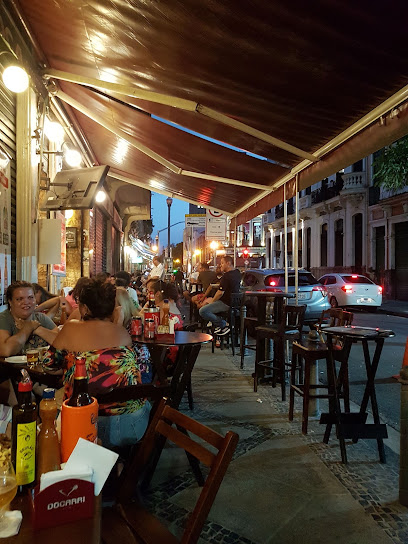
Dos Santos Restaurante
Experience authentic Brazilian cuisine at Dos Santos Restaurante in Lapa, where every meal tells a story of flavor and tradition.
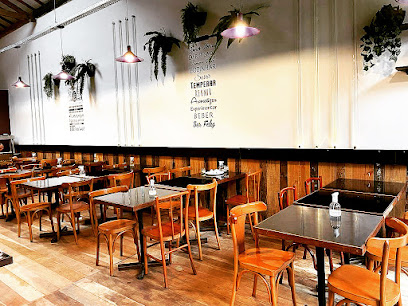
Adega Flor de Coimbra
Discover the essence of Portuguese cuisine at Adega Flor de Coimbra in Rio's lively Lapa district – where tradition meets flavor.
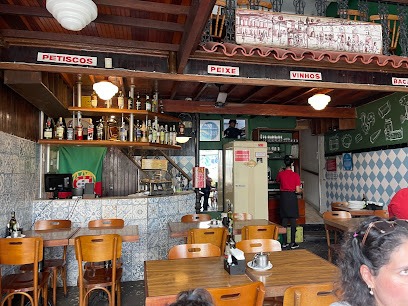
Markets, malls and hidden boutiques
Galeria da Lapa Shopping
Explore Galeria da Lapa Shopping in Rio de Janeiro: A vibrant shopping experience with local flair, diverse dining, and unique finds.
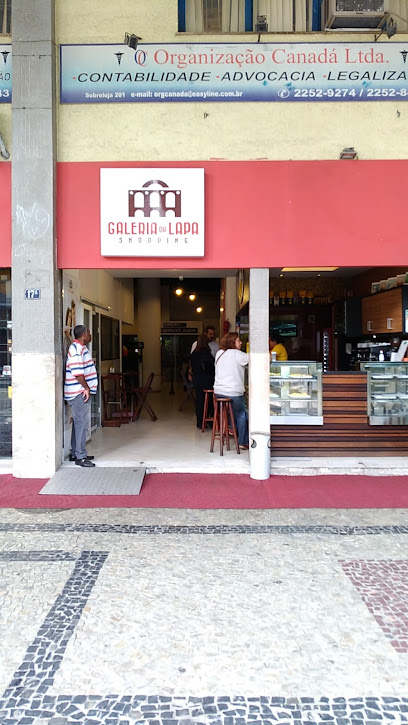
A & M Colecionáveis e Antiguidades - Rio De Janeiro
Discover unique antiques and second-hand treasures at A & M Colecionáveis e Antiguidades in the vibrant Lapa district of Rio de Janeiro.

lapaearte
Explore Lapaearte, a vibrant craft store in Rio de Janeiro, showcasing unique handmade creations and local artistry for every traveler.
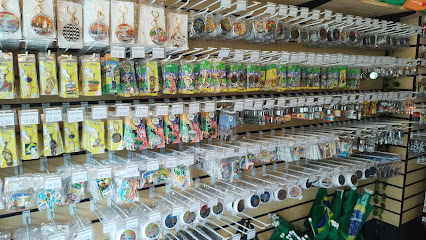
Cristalit II
Explore Cristalit II in Rio's Lapa district for exquisite mirrors and picture frames that capture the essence of Brazilian craftsmanship.
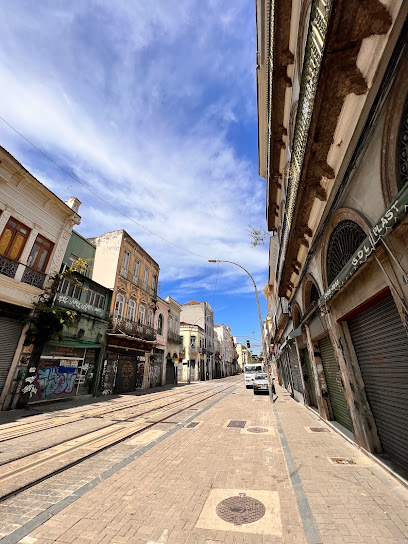
Maria Rendeira Arte e decoração
Explore the vibrant world of Brazilian artistry at Maria Rendeira Arte e Decoração in Rio de Janeiro's historic Lapa district.
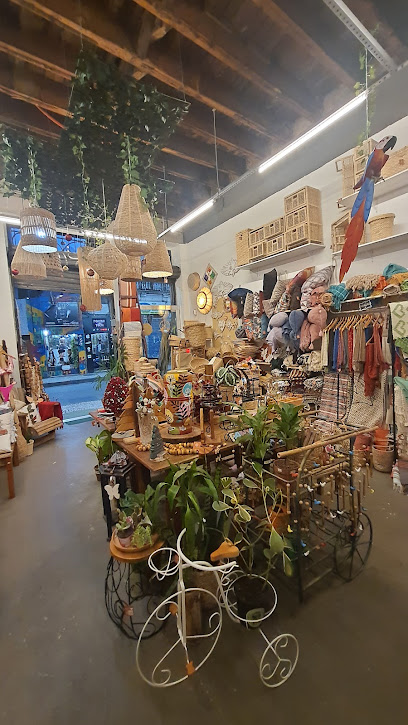
Marioca Moda
Explore the vibrant styles at Marioca Moda, a top women's clothing store in Rio de Janeiro's bustling Centro district.

BAGGIO
Explore the vibrant fashion scene of Rio de Janeiro at BAGGIO, a designer clothing store in the historic Lapa district, where style meets culture.
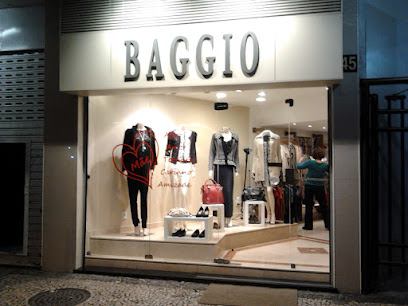
Loja Pence
Discover the essence of Brazilian fashion at Loja Pence, a chic clothing store in Rio de Janeiro's vibrant Centro district.
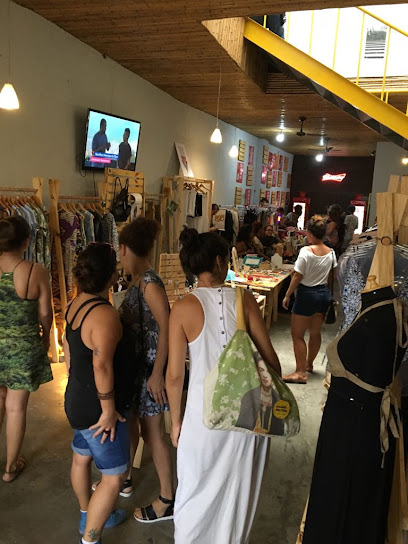
Lúdka And Co
Explore Lúdka And Co, a gift shop in Lapa, Rio de Janeiro, where unique treasures and local crafts await to capture the city's vibrant spirit.
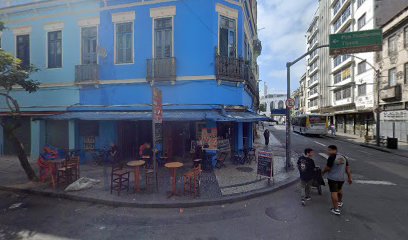
Esplendor Joias Estilo & Luxo
Discover the vibrant world of costume jewelry at Esplendor Joias Estilo & Luxo, where Brazilian creativity meets affordable elegance in the heart of Lapa.
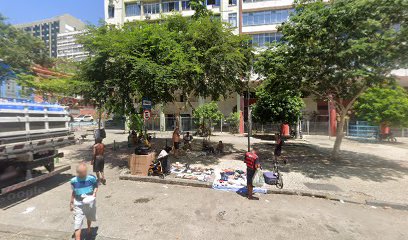
Essential bars & hidden hideouts
Bar Carioca da Gema
Experience the vibrant pulse of Rio de Janeiro at Bar Carioca da Gema, where live music meets exquisite cocktails in the heart of Lapa.
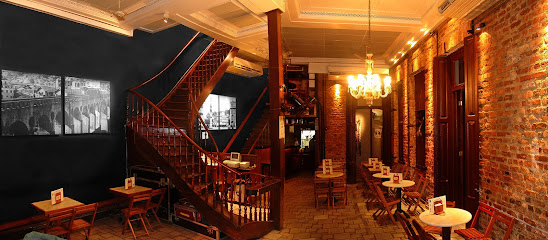
Leviano Bar
Discover the vibrant nightlife of Rio de Janeiro at Leviano Bar, where music, drinks, and culture come alive in the heart of Lapa.
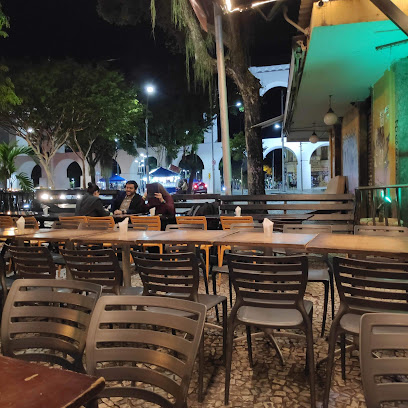
Booze Bar Lapa
Experience the vibrant culinary delights of Booze Bar Lapa, where gourmet burgers and craft beers meet a lively atmosphere in Rio de Janeiro.
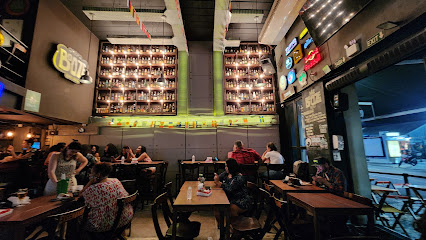
Antonio's Bar
Experience the vibrant Brazilian nightlife at Antonio's Bar in Lapa, where delicious food and lively atmosphere come together.
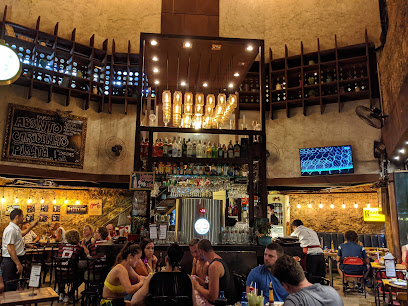
Pub Kriok
Discover the vibrant nightlife at Pub Kriok, a premier bar and disco club in Lapa, Rio de Janeiro, where music and fun collide.
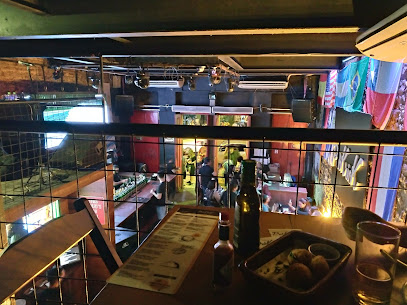
Bar Ernesto
Experience authentic German cuisine and a lively atmosphere at Bar Ernesto in the heart of Lapa, Rio de Janeiro.
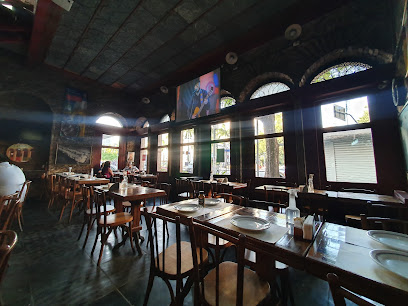
Lapa Irish Pub
Experience the vibrant blend of Irish culture and Brazilian hospitality at Lapa Irish Pub in Rio de Janeiro's lively Lapa district.
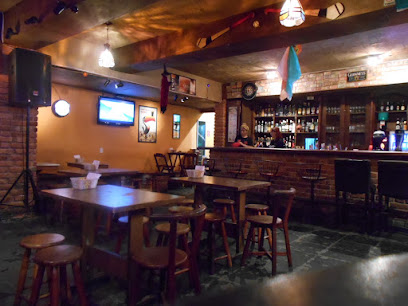
Improviso Lounge Bar
Discover the lively Improviso Lounge Bar in Lapa, Rio de Janeiro, where creative cocktails and live music create an unforgettable nightlife experience.

Bohemian Lapa Cavern Pub
Discover the lively spirit of Rio's nightlife at the Bohemian Lapa Cavern Pub, where music, drinks, and vibrant culture collide.
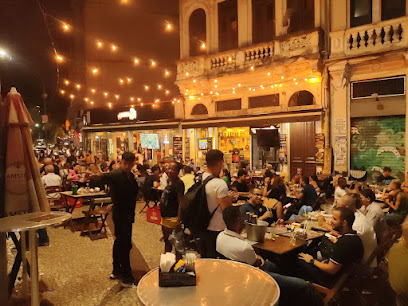
Bar da Cachaça Original
Dive into the heart of Rio's nightlife at Bar da Cachaça Original, where vibrant music, authentic drinks, and local flavors await.
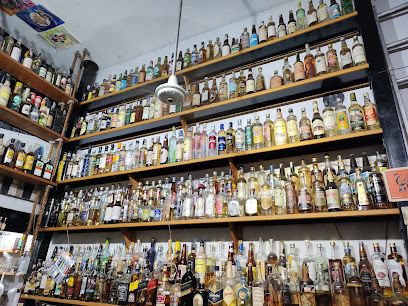
Local Phrases
-
- HelloOlá
[oh-LAH] - GoodbyeTchau
[chow] - YesSim
[seem] - NoNão
[now] - Please/You're welcomePor favor/De nada
[por fah-VOR/de NAH-da] - Thank youObrigado/a
[oh-bree-GAH-doh/dah] - Excuse me/SorryCom licença/Desculpe
[cohm lee-SEN-sah/dehs-KOOL-peh] - How are you?Como você está?
[KOH-moh VOH-say ehs-TAH] - Fine. And you?Bem. E você?
[bane/eh VOH-say] - Do you speak English?Você fala inglês?
[voh-say FAH-lah een-GLEH-s] - I don't understandEu não entendo
[eh-oo now ehn-TEN-doh]
- HelloOlá
-
- I'd like to see the menu, pleaseEu gostaria de ver o cardápio, por favor
[eh-oo gohs-tah-REE-ah deh veh oh kahr-DAH-pee-oh, poor fah-VOR] - I don't eat meatEu não como carne
[eh-oo now KOH-moh KAR-neh] - Cheers!Saúde!
[sow-OO-deh] - I would like to pay, pleaseEu gostaria de pagar, por favor
[eh-oo gohs-tah-REE-ah deh pah-GAHR, poor fah-VOR]
- I'd like to see the menu, pleaseEu gostaria de ver o cardápio, por favor
-
- Help!Socorro!
[soh-KOH-roh] - Go away!Vá embora!
[vah ehm-BOH-rah] - Call the Police!Chame a polícia!
[SHAH-meh ah po-LEE-syah] - Call a doctor!Chame um médico!
[SHAH-meh oon MEH-dee-koh] - I'm lostEstou perdido/a
[ehs-TOH-oo pehr-DEE-doh/dah] - I'm illEstou doente
[ehs-TOH-oo doo-EHN-teh]
- Help!Socorro!
-
- I'd like to buy...Eu gostaria de comprar...
[eh-oo gohs-tah-REE-ah deh kohm-PRAR] - I'm just lookingEu só estou olhando
[eh-oo soh ehs-TOH-oo oh-LAHN-doh] - How much is it?Quanto custa?
[KWAHN-too KOOS-tah] - That's too expensiveIsso é muito caro
[EE-soh eh MOO-ee-toh KAH-roh] - Can you lower the price?Você pode baixar o preço?
[voh-say POH-deh BAH-shahr oh PREH-soh]
- I'd like to buy...Eu gostaria de comprar...
-
- What time is it?Que horas são?
[keh OH-rahz sah-oh] - It's one o'clockÉ uma hora
[eh OO-mah OH-rah] - Half past (10)Meio-dia e meia
[MAY-oh DEE-ah ee MAY-ah] - MorningManhã
[MAHN-yah] - AfternoonTarde
[TAHR-deh] - EveningNoite
[NOY-chee] - YesterdayOntem
[ON-tehng] - TodayHoje
[OH-zhee] - TomorrowAmanhã
[ah-MAHN-yah] - 1Um
[oom] - 2Dois
[doys] - 3Três
[treys] - 4Quatro
[KWAH-troh] - 5Cinco
[SEEN-koh] - 6Seis
[says] - 7Sete
[SEH-tay] - 8Oito
[OY-too] - 9Nove
[NOH-veh] - 10Dez
[deys]
- What time is it?Que horas são?
-
- Where's a/the...?Onde fica o/a...?
[OHN-deh FEE-kah oh/ah] - What's the address?Qual é o endereço?
[kwahl eh oh ehn-DEH-reh-soh] - Can you show me (on the map)?Você pode me mostrar (no mapa)?
[voh-say POH-deh meh moh-SHTRAR (noo MAH-pah)] - When's the next (bus)?Quando é o próximo (ônibus)?
[KWAHN-doh eh oh PROH-ksee-moh (OH-nee-boos)] - A ticket (to ....)Um bilhete (para ....)
[oom bee-YEH-teh (PAH-rah)]
- Where's a/the...?Onde fica o/a...?
History of Lapa
-
Lapa's history began in the colonial era of the 18th century when it was established as a residential area for the wealthy elite of Rio de Janeiro. The neighborhood's name is derived from the Portuguese word for 'lapinha', a small chapel, which reflects the area’s early religious and cultural significance. The construction of the iconic Arcos da Lapa aqueduct in 1750, originally built to supply water to the city, marked a pivotal moment in Lapa's urban development, transforming it into a central hub of activity.
-
In the early 20th century, Lapa became the heart of samba music and culture in Brazil. The neighborhood was home to numerous samba clubs and informal gatherings, which played a crucial role in the evolution of this vibrant musical genre. The famous 'Estácio de Sá' samba school was founded here, bringing together diverse communities and fostering a rich cultural exchange that resonated throughout Brazil.
-
By the 1930s and 1940s, Lapa had established itself as a bohemian enclave, attracting artists, musicians, and intellectuals. The area became synonymous with nightlife, featuring bars, theaters, and dance halls that celebrated Brazil's cultural diversity. The historic 'Cine Lapa' and the 'Teatro de Comédia' were significant venues that showcased local talent and contributed to the artistic vibrancy of the neighborhood.
-
In the latter half of the 20th century, Lapa experienced a decline characterized by urban neglect and crime. Many residents left, and the neighborhood's cultural institutions fell into disrepair. However, the early 2000s saw a resurgence in interest as artists and entrepreneurs began to revitalize the area. The restoration of historical buildings and the introduction of cultural festivals reinvigorated Lapa, establishing it as a focal point for tourism and local art.
-
Today, Lapa is celebrated for its lively atmosphere and rich cultural offerings. The neighborhood hosts numerous music festivals, art exhibitions, and gastronomic events that reflect both its historical roots and contemporary influences. The iconic Selarón Steps, a mosaic staircase created by Chilean artist Jorge Selarón, serves as a symbol of the neighborhood’s artistic spirit and draws visitors from around the world, solidifying Lapa's status as a cultural landmark in Rio de Janeiro.
Lapa Essentials
-
Lapa is conveniently located in the heart of Rio de Janeiro and can be accessed easily from various neighborhoods. From Copacabana or Ipanema, take the metro Line 1 (the General Osório station) to the Cinelândia station, which is about a 10-minute walk from Lapa. If you are coming from Santa Teresa, you can take the Bonde (streetcar) that goes directly to Lapa. Buses also connect Lapa with other neighborhoods, including Centro and Botafogo. The journey from the airport can be done via taxi or rideshare apps, taking approximately 30-45 minutes depending on traffic conditions.
-
Lapa is a walkable neighborhood, making it easy to explore on foot. Public transport options include buses and the metro, with the nearest metro station being Cinelândia. For a unique experience, consider using the iconic Bonde tram, which connects Lapa with the Santa Teresa neighborhood. Bicycles are also a popular choice, and there are bike-sharing programs in the city. Keep an eye out for bike lanes that make cycling safer and more enjoyable.
-
While Lapa is generally safe during the day and is vibrant at night, tourists should remain cautious. Areas around the arches of Lapa and certain side streets can experience higher crime rates, especially after dark. Avoid flashing valuables and be mindful of your surroundings. It is advisable not to walk alone late at night, particularly in less crowded areas. Stick to well-lit streets and consider using taxis or rideshare services to travel after dark.
-
In case of emergencies, dial 190 for police assistance and 192 for medical emergencies. The local hospitals are equipped to handle various situations, and pharmacies are readily available for minor health concerns. Ensure you have travel insurance that covers emergencies during your stay. For non-emergency issues, you can contact the tourist police, who are available in popular tourist areas.
-
Fashion: Do wear comfortable clothing suitable for warm weather, and avoid overly revealing outfits. Don't wear flashy jewelry that may attract unwanted attention. Religion: Do be respectful at local churches and cultural sites. Don't take photos where prohibited. Public Transport: Do give up your seat for the elderly and disabled. Don't eat or drink on public transport. Greetings: Do greet with a friendly 'Oi' or 'Olá'. Don't assume familiarity; use a polite tone. Eating & Drinking: Do try local street food and enjoy the vibrant nightlife. Don't drink excessively in public spaces.
-
To experience Lapa like a local, visit the street markets for fresh produce and artisanal goods. Attend a samba class or join a local dance event to immerse yourself in the culture. Explore the many art galleries and enjoy the vibrant street art. For nightlife, check out the local bars and clubs, but ask locals for recommendations to avoid tourist traps. Consider visiting during the weekend when Lapa is filled with live music and festivities, creating a lively atmosphere.
-
Lapa is known for its rich history and cultural significance. Don't miss the Selarón Steps, a colorful mosaic staircase created by artist Jorge Selarón, which is a popular photo spot. The Arcos da Lapa, an impressive aqueduct, is another iconic landmark. To appreciate local music, visit one of the many samba clubs in the area, where you can enjoy live performances and perhaps join in the dancing.
-
Lapa boasts a diverse culinary scene. Do try traditional Brazilian dishes at local eateries and sample street food such as coxinha and pão de queijo. Don't miss out on the local caipirinha, a refreshing cocktail made with cachaça, lime, and sugar. For a local experience, visit a boteco (casual bar) where you can enjoy drinks and small plates in a relaxed atmosphere.
Nearby Cities to Lapa
-
Things To Do in São Paulo
-
Things To Do in Florianópolis
-
Things To Do in Brasília
-
Things To Do in Foz do Iguaçu
-
Things To Do in Puerto Iguazú
-
Things To Do in Hernandarias
-
Things To Do in Salvador
-
Things To Do in Encarnacion
-
Things To Do in Villarrica
-
Things To Do in Carmen del Parana
-
Things To Do in San Bernardino
-
Things To Do in Ypacarai
-
Things To Do in Aregua
-
Things To Do in Asuncion
-
Things To Do in Tacuarembó










